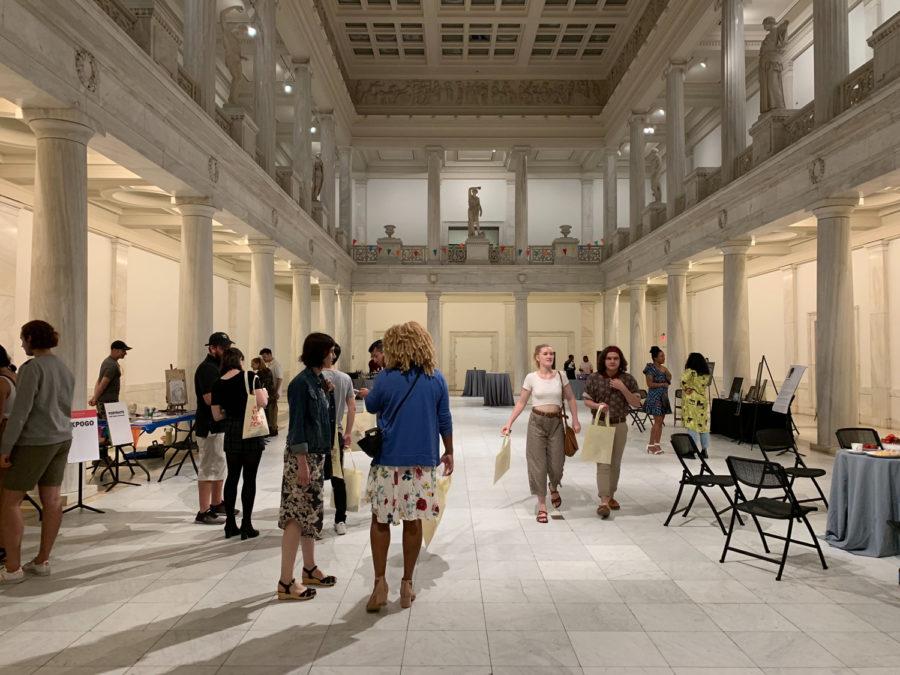Opinion | You don’t need to be a critic to value art
June 23, 2021
Going to an art museum is, on its surface, a bizarre thing to do. You arrive at a building full of paint-splattered canvases, sculpted materials and projected films to stare silently at these pieces in the company of strangers. Art museums clearly should exist — there’s wide agreement on that — but there’s confusion as to why they should and how to experience them.
Art museums certainly don’t have a perfect historical record of being venerable institutions that make society better, and they’re often perceived as mysterious and aloof to people who haven’t explicitly studied art. But you don’t have to be an art critic to understand and enjoy art, and a redefinition of art’s purpose is in order for art museums to be more fully accessible.
Historically, museums have been very conservative and elitist institutions. For centuries, art museums in the West have housed stolen goods from colonized countries, proudly displaying these burgled items to gawking visitors. Worse, many museums have been used essentially as propaganda for racist ideas.
For example, eugenics — an ideology advocating the purposeful elimination of races, which the Nazis repurposed to justify their genocidal impulses — was once treated as science. The American Museum of Natural History hosted the second and third International Eugenics conferences in 1921 and 1932, but those dates are remarkably absent from their website’s history timeline.
Furthermore, even museums housing beautiful and important works of art often feel inaccessible. The majority of art criticism takes place in newspapers and on urban college campuses, lending a shroud of elitist mystery to the halls of museums.
The fact that there are entire tracks of study available at colleges for art history and curatorial work can sometimes — unfortunately — only further the idea that it requires intense study and knowledge to “understand” what’s happening in art museums.
And modern art has only served to further confuse the conversation. When Marcel Duchamp can turn a urinal on its side and call it art, or Robert Ryman can present blank canvases that sell for $15 million, art museums can seem like more of a headache to understand than an interesting way to spend an afternoon.
It doesn’t have to be like this, though. The confusion as to how art museums should be thought about and experienced is due to a single question, one that most people would have a very difficult time answering — what is art for?
We need an answer to this question that allows anyone to enter an art museum and “get” what’s “going on.” Everyone deserves a chance to appreciate resonant art without the aura of mystery that art museums often shroud themselves in, and museums should be doing everything they can to cultivate a non-elitist, welcoming experience.
To address these concerns, we need to realize that art exists to create an emotional response in people that makes them better. Great art does this naturally, and it’s only the confusion around art museums and our approaches to them that clouds our responses.
When you look at a Vincent van Gogh painting, you can appreciate the beauty that shines through a world of suffering. When you look at a Picasso, you can remember to abhor war in all its ugliness. When you look at Edward Hopper’s work, you can appreciate the stillness in everyday moments.
But these are just my interpretations. Every person is entitled to their own, perfectly individualized response to art in the absence of any information about it. I encourage everyone to purposefully encounter art, listen to your emotional response to it and guard it as your own.
You’re allowed to walk through a museum and interpret the pieces as you see fit, loving or hating them with a burning passion. In fact, if you walk through a museum disgusted by everything you see, you’re “getting” art more than someone who carefully discards their opinions because they assume that art critics must be correct.
But there is absolutely a time and place for getting more information about a piece of art. Curators and art critics can heighten viewers’ emotional responses to art with well-timed, well-placed information. More information is not always good — sometimes extra facts about a piece of art can detract from your experience, and you’re not obligated to know everything about a piece of art — but sometimes a little more information is delightful.
Learning more about a piece of art’s creator and the process they used to make it can enhance the experience of looking at it, and that is what museums should aim to do. For example, I’ve found that learning about Van Gogh’s life makes his paintings feel a little more poetic and bittersweet.
Museums shouldn’t force information down your throat, but carefully supply it when it’s sought out. Importantly, as a viewer, you don’t have to seek it out. If you saw “The Starry Night” and decided that it was perfect in your eyes, and you didn’t want to risk the fact that knowing more might ruin your experience of it, you’d never need to seek more information about it.
Art museums should try to be conscious of the bettering effect that art can have on people, but as long as they remain in their current, often elitist form, we should approach art differently ourselves. While more knowledge is sometimes good, cling to your opinions about art — within reason, your experience of the piece and its meaning to you is the most important thing about any art.
Lucas DiBlasi writes primarily about politics, economics and art. Feel free to email your opinions on Weezer (or whatever else) to him at [email protected].








